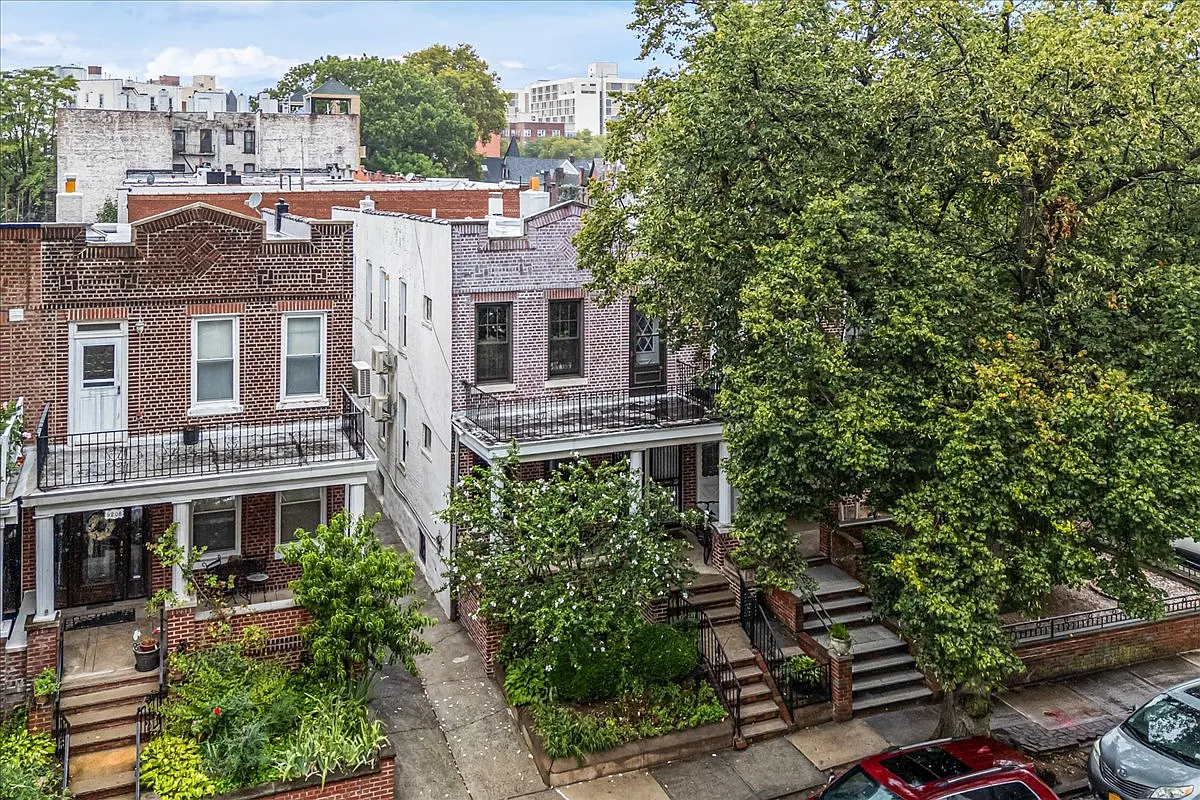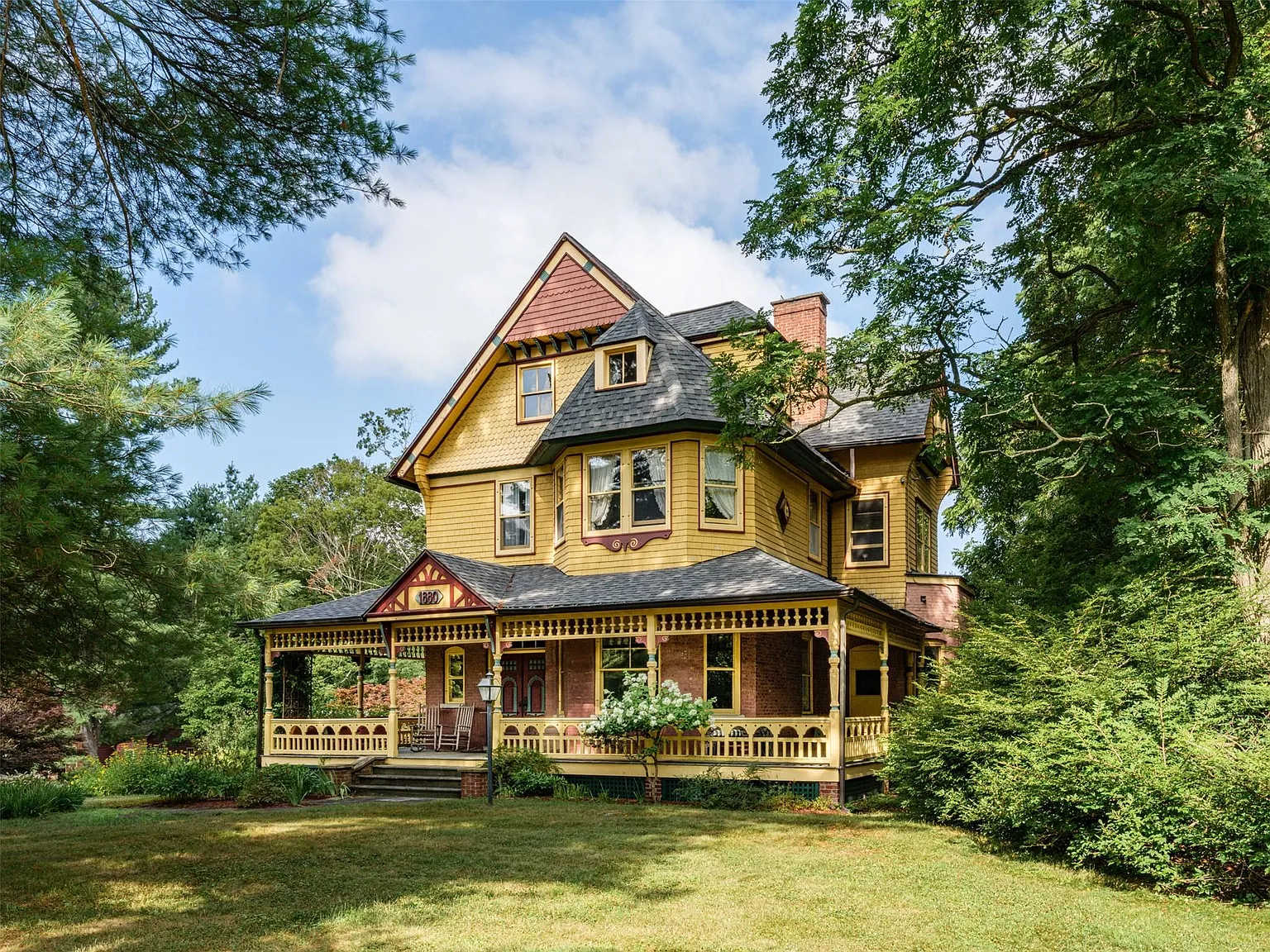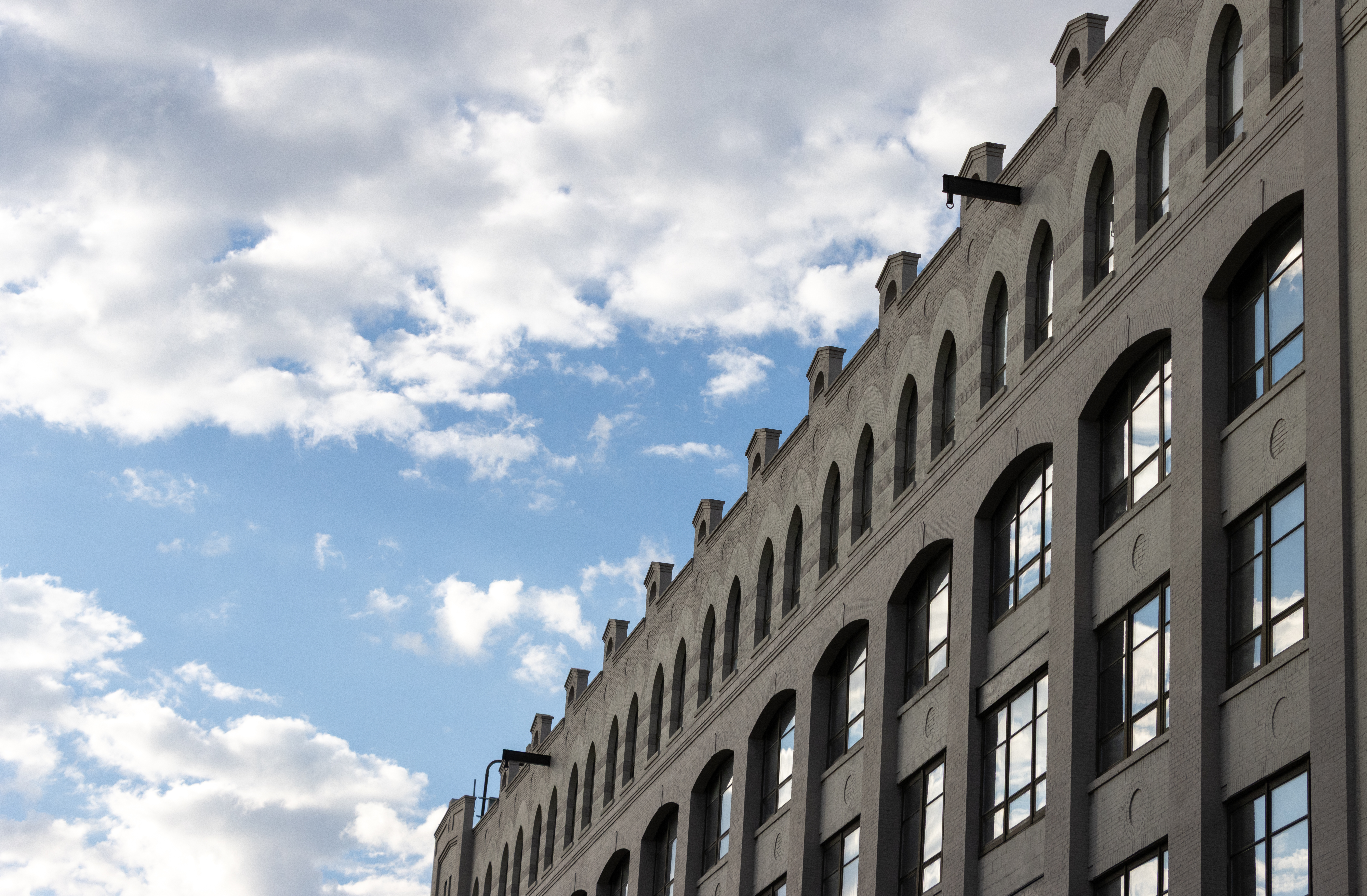House of the Day: 1230 Dean Street
As careful a renovation as the owner of 1230 Dean Street did, this place had no business being listed at $1,650,000. Which is why, after six weeks, the asking price has been reduced to $1,499,000. Unfortunately, we suspect that the three-car garage and landscaped garden won’t be enough to get the deal done at this…


As careful a renovation as the owner of 1230 Dean Street did, this place had no business being listed at $1,650,000. Which is why, after six weeks, the asking price has been reduced to $1,499,000. Unfortunately, we suspect that the three-car garage and landscaped garden won’t be enough to get the deal done at this price. But don’t feel too bad for the sellers—after all, they bought the place for $427,450 back in 2004.
1230 Dean Street [Corcoran] GMAP P*Shark





9:15:
I meant Accra. (My finger slipped!)
NOP
9:15:
Actually, from what I’ve learned from friends and colleagues who’ve grown up in cities around the globe — Daccra, Rome, Paris, Tokyo, Bombay, etc. — there are lots of similarities to coming up in my old neighborhood, Crown Heights. There’s something to being a city kid, no matter what the country, that’s recognizable across continents. I was lucky to grow up in Brooklyn, as are kids there today. It isn’t for small town folk, but for people who want to be in the world. You can’t put a price on that, which leaves me puzzled about all “flaming” over Crown Heights.
Nostalgic on Park Avenue
Regards to 6:52pm and his/her rather touching reminiscence of childhood in CH. And to Montrose, for his devotion to, and love of, the neighborhood. Respect to the critics as well. Lord knows, plenty of other neighborhoods, buildings, houses, apartments and condos have gotten ruthlessly and brutally torched on this website, so as for CH taking some shots, welcome to the club. The moral of the story is that nearly anything is capable of being loved, CH too
I love the blanket assessments of an entire nabe based on one street. Get the feeling that the people who call places slums have rarely seen them and make judgements based on the view out the window of their car?
Get out of your bubble.
House is still overpriced.
6:52 thanks for that awesome and positive post. Seems like you had a really great time..keep the memories coming. I grew up in Africa which was totally exciting also but this is very different.
Montrose Morris:
That’s good advice to 6.23 and ivanna, and probably the same people would give in the 1950’s!
Nostalgic on Park Avenue
I think if it sold for $427,450 in 2004, that’s about what it is worth plus the cost of renovation.
6:23, yep – gotta turn into the side streets. Do it sometime, go all the way up to Eastern Parkway, and go down Dean, St. Mark’s, Park Place, Prospect Place, Sterling, Brooklyn Avenue, etc. More than just pockets of goodness. Both New York Ave and Brooklyn Ave are quite beautiful from Dean Street up to Eastern Parkway. You can’t see anything catching a quick glimpse from Atlantic Ave.
iwannabrownstone, do the same. The blocks between Bergen and Eastern Parkway are in the next phase of the landmarking process, and will be landmarked, the sooner, the better. Some of the blocks nearer to EP are gorgeous, as are some nearer Atlantic. Prices are more or less similar. Houses closer to Nostrand are generally not as desirable as those closer to New York or Brooklyn Ave, and Kingston is about as far over in that direction as most people want to look, although there are some nice houses past there, but they are closer to the Albany Houses, which are far removed from most of Crown Heights North. You should check out whatever interests you, and take it from there.
Brownstoner:
This is a sweet house on one of my favorite blocks from my childhood in Crown Heights.
My school, P.S. 41, a Victorian red-brick pile with a mansard roof, was at the corner of Dean Street and New York Avenue, and my kindergarten and first-grade teacher often walked her class down Dean on the first leg of our class trips to other parts of the neighborhood (taking buses to the Brooklyn Museum, for example). One of my first insights into adult behavior occured on this block. As we walked along, a man passing us turned and asked: “Are all these your children?” My teacher smiled and said no. Suddenly, I knew what flirting was, even though I didn’t have a name for it.
As I learned many years later, my little school was torn down for a high-rise apartment house, but only after it was sold or leased to a Yeshiva and my friends and I were transferred to P.S. 138 on Sterling Place (or is it Street?) off Nostrand Avenue. This was a longer walk for me, but a real pleasure, because I got to know the stores and merchants along the way. Imagine, a second grader walking unaccompanied by his parents to school! But that’s how safe the neighborhood was. And important for a city kid who was learning to navigate his neighborhood and town.
Dean Street between New York and Nostrand was bookended by two handsome churches, as it probably still is. Significantly, in retrospect, they were Protestant, not Catholic, representing the relative status of the neighborhood when they were built. (Catholics at the turn of 1900 were usually working class. Jewish residents, who arrived later in the area, built synagogues in and around Eastern Parkway and Brower Park, where big elevator apartment houses provided middle-class housing. Dean, in the meantime, kept a bit of old-fashioned Protestant elitism alive. Did I read social and class signifiers then? Certainly not, I was too busy having a good time. And I had friends of all types.)
Dean Street’s houses were terrifically eclectic. But more important to me than their architecture were the stoops and areaways were we kids played ball, tag, and cops and robbers. The stoops’ balusters were perfect hiding places, the garden fences just low enough to be vaulted, and the steps good for snipers with water pistols. But brownstones are hard. My little brother took a tumble down one stoop and put his front teeth through his lip. The blood was impressive. Afterward, my pals and I tiptoed by the spot as if the stoop would jump out and grab us.
Atlantic Avenue problematic? In this case, we were allowed to cross only with our parents because the train trestle created blind spots for all the traffic. But we crossed it frequently, on our way to the A train to take us downtown (with A&S and a lot of other department stores) and the Museum of Natural History in Manhattan. There was an especially nice fruit and nut store at the intersection of Nostrand and Fulton where the owner always gave my sister (the youngest of the three sibs) a special little gift bag. She was enormously shy and always hid behind my parents’ legs, and this small gesture by an old gent no doubt long dead is one of my earliest memories of an adult’s (rather than a parent’s or family member’s) kindness.
Above Atlantic Avenue, the LIRR had a classic, gable-roofed wood train station, painted green and yellow. Atlantic Avenue may have been unattractive and noisy, even then, but the little train station was fanciful, and put us in just the right mood for trips to Montauk and the Hamptons. And what a great way to see Brooklyn, the brownstone streets below the elevated line, the tower of Brooklyn Boys High School in the distance, and the Manhattan skyline beyond that.
Did we ever think of Atlantic Avenue while we played on Dean Street? No. These were two different worlds. One for families and kids, the other for cars and trains. Dean was a great play spot while Atlantic served as both an edge and connection to other places and experiences. (Come to think of it, how appropriate is that for a thoroughfare named after an ocean?)
Nostalgic on Park Avenue